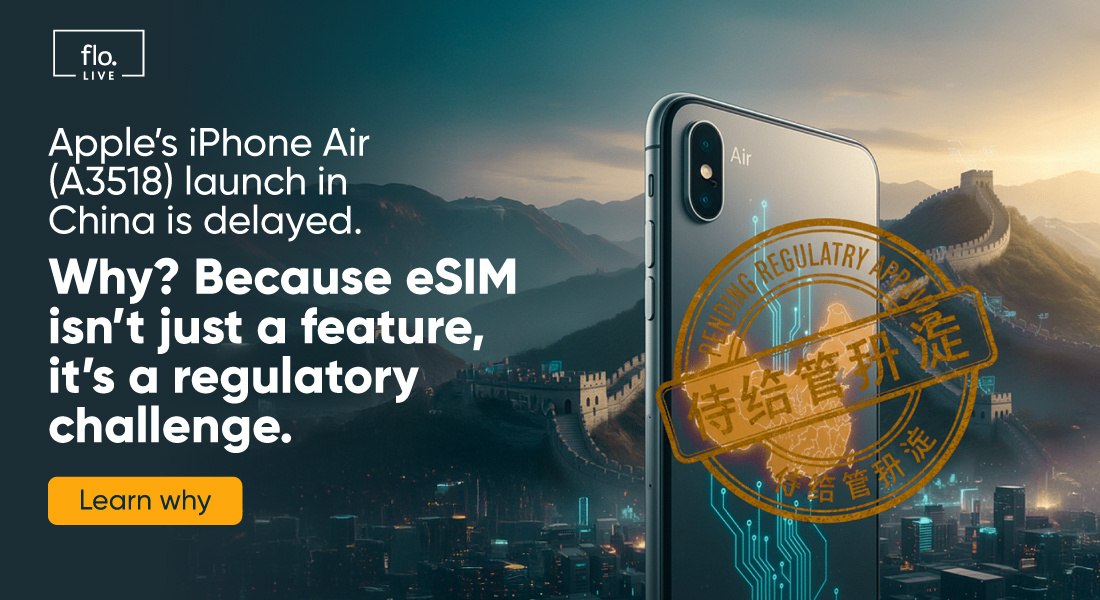Page Contents
Industry 4.0 is Here. And with the Right IoT Connectivity Solution, You’re Soaring

Page Contents
A truly connected industrial facility is no longer a future-focused idea. Many industry players already have hyper-automated, interconnected factories and plants benefiting from the improved performance found using multiple connected IoT devices, and multiple systems and third-party entities all working together around the facility, or even across the logistics or supply chain. This could be anything from security and lighting, to pallets, machinery, vehicles and trackers.
However, new innovations and technologies built for IoT are making IIoT even easier to benefit from than ever before. Here’s how.
Understanding the Evolution of Wireless Technologies
Over the past two decades, wireless technologies have changed beyond recognition, and we’re finally at the point where we have actual access technologies that were developed specifically for IoT. While in previous years we had technologies adapted for IoT – this is a game-changer. The advent of NB IoT and CAT-M, and 5G of course that promises everything, we can now think seriously about Industry 4.0.
These technologies should be able to intelligently handle a mix of requirements, whether that’s the range considerations for the RAN outside of your facility that needs to reach inside, low latency requirements for sensors that are being tracked over a 5 or a 10-year lifecycle, or differences in throughput between devices such as a video camera that needs high throughput or a pallet that simply updates once in a while when it moves. It’s clear that with all of these requirements, today, cellular technology is the best for IIoT, a single solution that can support your whole network.
Of course, you need to get the solution correct. The lowest cost solution, and the traditional approach, is obtaining connectivity from one of the local carriers in your country; in this case your devices use the public network of the carrier and share its capacity, throughput and resources so that you don’t have any control over Quality of Service or security, and you can’t even guarantee your in-facility coverage, which is a huge problem for always-on facilities that have high requirements of availability.
The next extension to connectivity was industrial facilities that started utilizing private core networks on public radio. This gave businesses more ability to control QoS, and they could even customize the service for critical and non-critical services. But the radio coverage and its capacity were still not guaranteed.
Today, the technology is there for facilities to leverage private core networks and private RAN, and it’s getting easier to make this happen. There is a growing trend of allocating unlicensed spectrums, starting with CBRS in the United States, but now expanding to the UK and EU. In the near future, we may see that this is a global practice, making it much easier for enterprises to gain truly powerful connectivity solutions as part of Industry 4.0.
→ Watch Now: Harnessing Advanced Wireless Networks for Industrial Application
The Benefits for Industrial IoT
Your own private dedicated network means that you have so much more resiliency than you have with a public solution, and are not dependent on the schedule, support, or maintenance of a third party, like the MNO for example. Here are some of the main benefits for Industrial IoT facilities:
- Management: Multiple facility management from a single dashboard, either on-premises for high-security requirements, or on the cloud. With network slicing functionality, your employees can even connect on your private core, with work-related information being routed through the private RAN, and anything else going through the public RAN. This is a huge benefit for workers who can use the same devices at the facility and at home, with no added risk to the network.
- Availability: Your own private network means you can support as many operators as necessary off that network, too. For devices that are mobile, or tracking and logistics use cases, you can track the devices when they are on facility, and then keep visibility to them on the move via multiple additional networks, all from the same dashboard, and without blind spots or connectivity gaps.
- Integration: Your network is wholly controlled by your IT team, whether that’s sitting in your physical facility but isolated from the network, or fully integrated with your enterprise security and IT infrastructure policies. No more third parties that need to connect to devices to ensure uptime, or take data for machine learning or AI projects. Your IT team can now have full control over who has access to that data and information, and that can be fully separated from your regular IT infrastructure if you choose.
- Performance: Without public users loading or congesting the network, you can enhance performance and get the lower latency or amplification that you need. Lower latency has a direct impact on the lifespan of IoT devices, and by putting the core network infrastructure right next to the application, you get to boost the lifespan to its fullest extent. You’re also able to create granular requirements for throughput, so that video solutions or autonomous vehicles for example can experience that high level of performance.
- Quality of Service: Your enterprise can determine the QoS for each use case, segmenting higher QoS to critical IoT devices, and then less devices that run in the background or simply send reports, they can get a lower priority. At all times, you’re no longer sharing the public network, so you aren’t being impacted by public surges from the consumer mobile community or events that are happening externally.
Additionally, these benefits are fully global, so if you have a multinational enterprise with distributed facilities, you can deploy a single solution for all of your facilities. You can also utilize the portability for IT devices as well as with personal devices, so that you can choose between the private or public network as necessary.
5G Will Dominate the IIoT Landscape
We’re so confident about the future of IIoT, that we’re willing to make a prediction. We believe that 5G, with its ultra-low latency, ultra-reliability and super high bandwidth requirements will be the route to true growth in Industry IoT. Of course, there’s some maturity that needs to happen to devices and platforms, but this will only speed up, enabled by smart cellular connectivity platforms with a future-focused approach.
Ready to take this journey with us? Schedule a call with one of our experts.

Join Our Newsletter
Get the latest tips and insights in our monthly newsletter.









